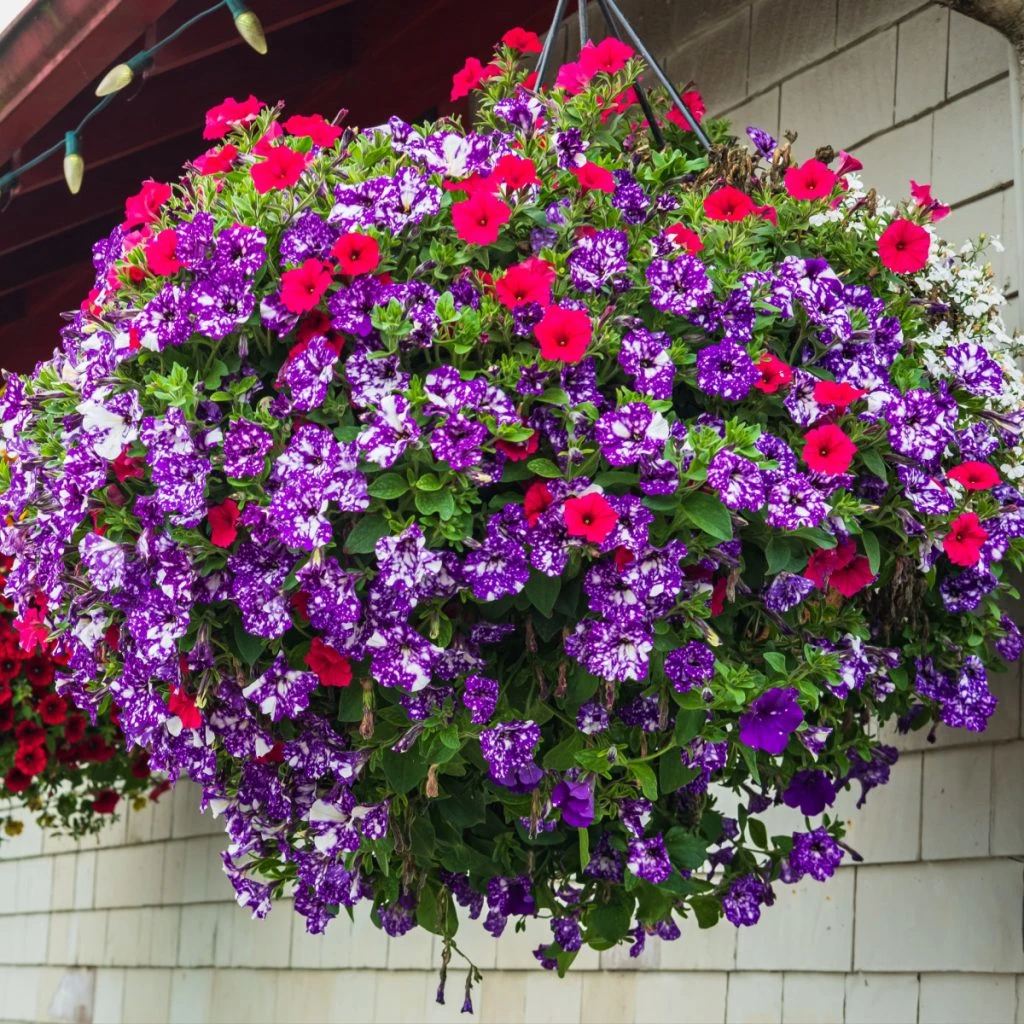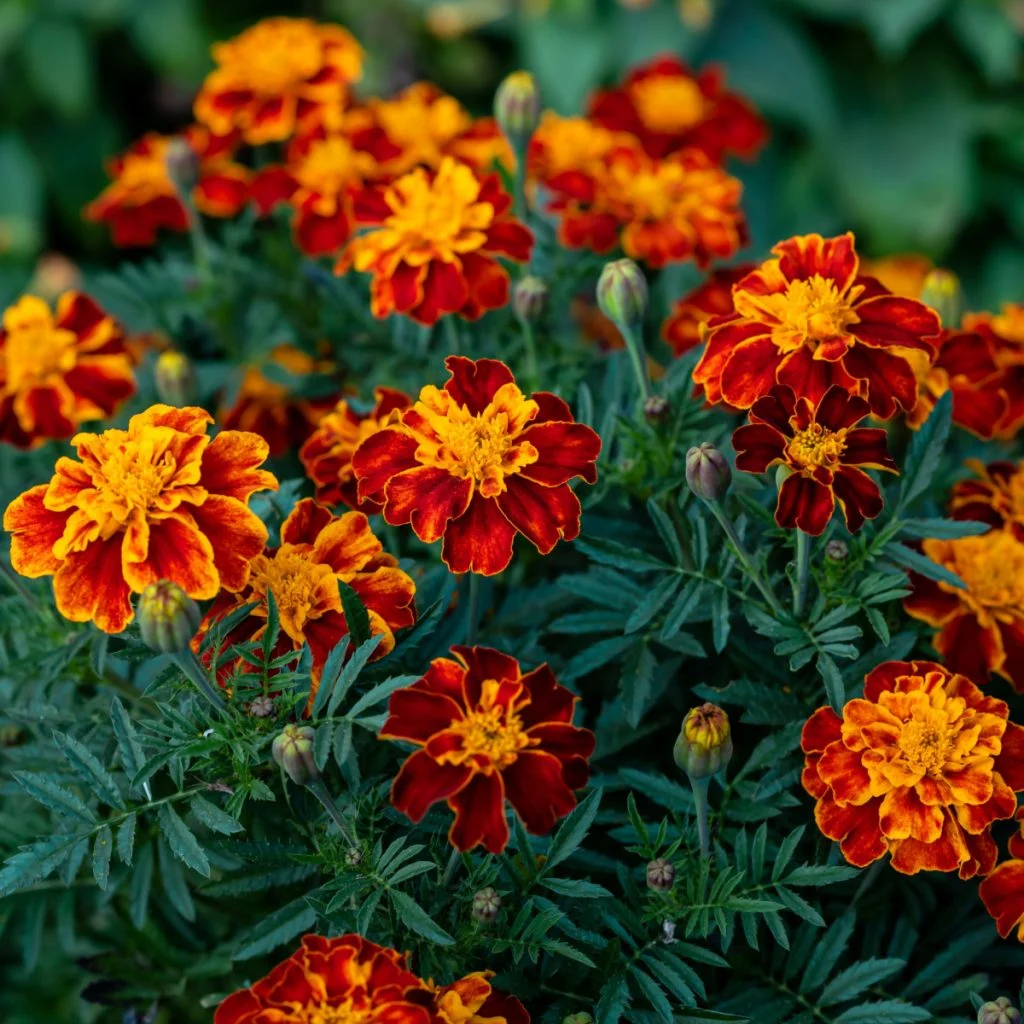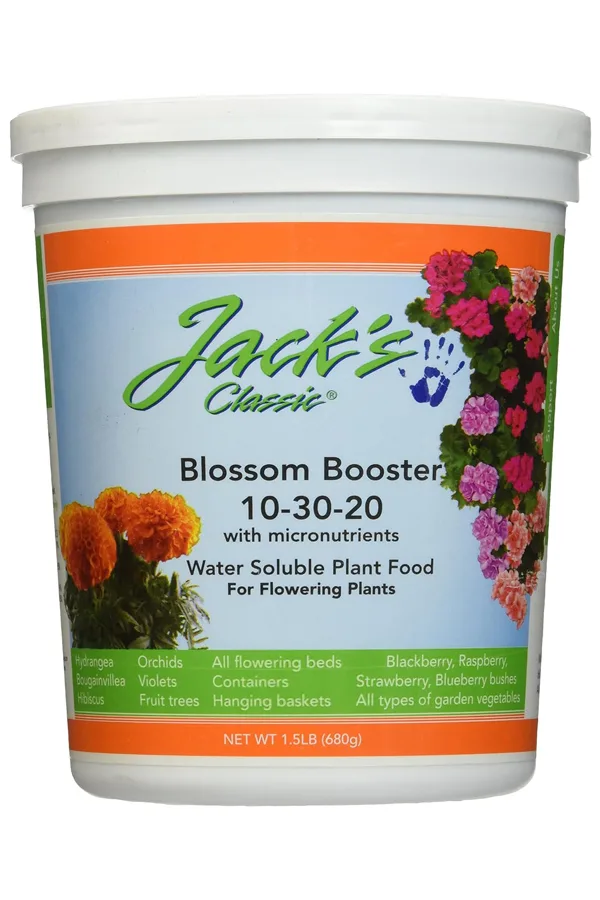Looking for the best fertilizer for your hanging baskets to keep them blooming strong and bright all summer long?
There’s nothing quite like the beauty of a hanging basket filled to the brim with blooms. Whether overflowing with petunias, calibrachoa, begonias, marigolds or other flowering annuals, a well-maintained basket can turn an ordinary porch or patio into a stunning display of color.
But if you’ve ever owned one, you know just how quickly that beauty can fade. Especially without the right care. And as it turns out – one of the most important parts of that care is choosing and using the right kind and type of fertilizer!

Hanging baskets have a lot working against them when it comes to staying healthy and full of blooms. One of the biggest challenges is the simple fact that they are limited in soil space. Unlike flowerbeds, hanging baskets rely on just a few quarts of potting mix. And that soil, although fertile at first, only holds a limited amount of nutrients. And that is where fertilizer can save the day!
Choosing The Best Fertilizer For Hanging Baskets
Most flowering annuals are heavy feeders. As they grow, they use up nutrients rapidly to keep producing flowers. If you don’t fertilize at all, baskets can fade quickly. You may notice a strong burst of flowers early in the season, but within weeks, blooms start to fade.
However, what many gardeners don’t realize is that using the wrong fertilizer can be just as bad as using no fertilizer at all. If you use a fertilizer that’s too high in nitrogen, your plants might look lush and green, but flowers will be few and far between.
Nitrogen encourages leaf and stem growth. That might be great for vegetable crops, or even for bedding plants trying to fill in. But for hanging baskets where the goal is big, bright blooms, too much nitrogen sends the plant’s energy in the wrong direction.

Instead of pouring its energy into making flowers, the plant starts growing lots of leaves and long vines. It may even look healthy from a distance, but up close, you’ll notice the blooms are sparse or completely missing.
This is a common issue for gardeners who feed their baskets with all-purpose fertilizers meant for lawn or general plant growth. These fertilizers usually have a high first number in the N-P-K ratio, which represents nitrogen.
Getting The Right Mix Of Nutrients
So, what is the best fertilizer for hanging baskets? The answer lies in choosing a fertilizer that has a higher ratio of phosphorus and potassium compared to nitrogen.
For that, make sure the middle and last numbers (phosphorus and potassium) are at least two to three times higher than the first (nitrogen). This kind of balance helps your plants focus their energy on forming flower buds and strong stems rather than just growing foliage. Affiliate Link : Jack’s Classic 10-30-20 Blossom Booster Water-Soluble Fertilizer
Phosphorus plays a key role in flower development and root strength. It’s essential for helping plants form blooms and maintain continuous flowering cycles.

Potassium, on the other hand, helps with overall plant health and flower production. It assists with water regulation in the plant and strengthens stems, helping the plant withstand heat and stress. Both of these nutrients support flower formation in a direct and lasting way.
When these two nutrients are more prominent in your fertilizer, your plants are much more likely to put out bigger, more vibrant blooms. And they’ll do it for longer stretches of time, because the nutrients are pushing the plant in the right direction.
The Best Way To Apply Fertilizer For Hanging Baskets
Equally important to choosing the right fertilizer is how you use it. Even with the perfect formula, applying it the wrong way – or at the wrong time – can reduce its effectiveness.
Hanging baskets are often watered daily or every other day, especially in warm summer weather. Each watering washes nutrients out of the soil, especially in open or hanging containers where water drains quickly. That means fertilizing once a month won’t cut it.
Instead, the best method for feeding hanging baskets is to apply your liquid fertilizer on a consistent schedule, every 7 to 10 days. This gives the plants a steady supply of nutrients, replacing what’s lost from frequent watering. It also keeps the plants growing strong and blooming continually.
And when applying those regular feedings, don’t forget to deadhead your plants! Regularly removing old blooms will also help your plants push out new blooms much faster. See our article: How To Deadhead Annual Flowers – Get More Blooms From Your Plants!

Diluting Liquid Fertilizer
To avoid overwhelming the plants, it’s important to dilute the fertilizer to half strength before applying. Most liquid fertilizers have instructions for standard garden use. Simply cut that amount in half when feeding your hanging baskets.
Half-strength feedings on a regular schedule are far better than full-strength feedings once in a while. You’ll avoid burning the roots and help the plants absorb the nutrients more efficiently.
When you feed, make sure to apply the liquid fertilizer directly to the soil. Pour it slowly over the base of the plant until it begins to drain from the bottom. If your basket is especially full, you may need to water a little first to help the soil absorb the fertilizer better.
Try to avoid letting the fertilizer sit on leaves or blooms, especially on hot, sunny days, as it can cause leaf spots or burn petals.
For baskets in full sun or areas that get very hot, you might even find it helpful to feed every 7 days instead of every 10. Hot weather puts extra stress on plants and can lead to faster nutrient loss. The more consistent you are with feeding, the more vibrant your blooms will be. For even more tips on keeping your hanging baskets blooming beautifully, check out our article: How To Save Struggling Hanging Baskets – Bring Your Baskets Back To Life!
Here is to giving your hanging baskets the best fertilizer around – and to big blooming baskets all summer long!
Simple Garden Life
Follow Our Facebook Page For Even More Great Tips! Simple Garden Life Facebook Page
Simple Garden Life is a website dedicated to keeping gardening fun, simple and enjoyable! We publish two new articles each week along with a new garden podcast episode every two weeks. This article may contain affiliate links.
